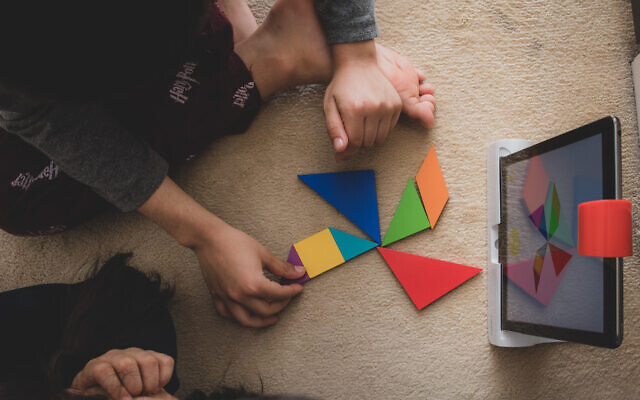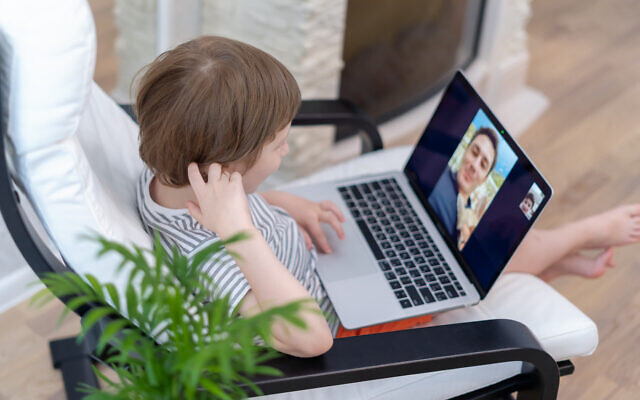A fine balance
It's natural to be scared of change, but technology has provided a lot of advancements in this world. And there are a lot of advantages to increased connectivity.
Children these days can’t grasp the concept of a physical encyclopedia. They can’t understand the notion of a film camera with negatives that need to be taken to a photo shop or chemist to be developed. But while life may have seemed simpler back in the day, there are some advantages to increased connectivity, over and above complementing our children’s education.
1. Connecting with loved ones
COVID showed us just how lonely it can be without each other. With millions of Australians living alone, sometimes the only contact they have with the outside world is via a phone. During these ongoing lockdowns, it can only be a good thing that grandparents can see their grandchildren via apps such as FaceTime. For many grandparents or family members, it doesn’t matter if the child isn’t talking to them; all that matters is that they can see them – whether that’s watching them play, interactively playing a game with them or reading a bedtime book.
2. Increased freedom of expression
Arts and crafts are amazing. They allow children to express their creativity in a tactile and physical way. Screens should not replace this. Rather, they should build on this. Children have wonderful imaginations. Giving them access to computers, tablets and other digital learning tools means they can turn their drawings into 3D animations or print them on a 3D printer. They can use technology to code a game that they can play with their friends or family. Sure, let them get messy with paint, but also give them the opportunity to digitally shine.
3. Getting them ready for the real world
Jobs these days are varied. Children can dream of being whatever they want to be when they grow up. And jobs in the tech world are only increasing. According to Forbes, software developers will be among four occupations which will be adding the most jobs over the coming decade. And according to LinkedIn, more than 80% of jobs that will exist in 2030 haven’t even been invented yet. The times they are changing, and giving children the power of technology, in a safe and balanced way, helps them get ready for the future.
4. Expanding their horizons
Not everyone can visit the zoo or head to a museum to learn about space. With technology though, they can. They can learn about newly discovered animals or species, they can interactively walk the same ground as the dinosaurs or virtually visit The Louvre. What wonderful opportunities for all ages.
It’s a different world
Technology can sometimes get a bad rap. But when used in the right way, it can, in fact, be an effective and engaging tool to connect – with people, with ideas and with the world.

Getting the balance right
Of course, as with most things in life, there are advantages and disadvantages to the use of technology. The best example of this is being an active or passive technology user. An active user is one that is interacting with the technology. A passive user is aimlessly watching. While for many families there a time and place for passive down-time in front of a screen, using technology must be balanced against physical activity, face-to-face interaction, and play.
So how do you get the balance right?
- Set some ground rules: this may be how long your child is allowed on a screen, where your child can use devices or how your child can use screens. For example, you may only allow one hour per day and half of that time must be interactive games rather than passive watching.
- Lead by example: as the saying goes: monkey see, monkey do. If you are constantly on your phone or device, children will think that’s ‘normal’ and expect the same.
- Do an activity with them once screen time is finished: while this may not always be doable, it can be a good idea to encourage your child to play a game or do an activity once screen time is finished. And if possible, sit alongside them and help.
- Have other options around: parenting children of any age isn’t easy and at times, it can be much simpler to turn to the digital babysitter. But having some Lego, magnets or books around can also entertain the children while you’re busy getting dinner ready.
- Create screen-free zones: whether that’s certain times of day or certain areas of your home, make sure there are spaces where children can be without screens. For example, meals are screen-free times or only have televisions in public spaces.
Balancing screen time with physical activity and interaction can be challenging, and how you go about it will largely depend on your individual circumstances. But having some measures in place can provide children with the best of both worlds – the new and the old.


comments